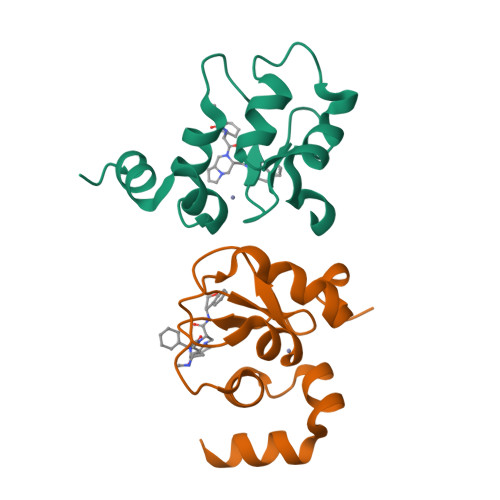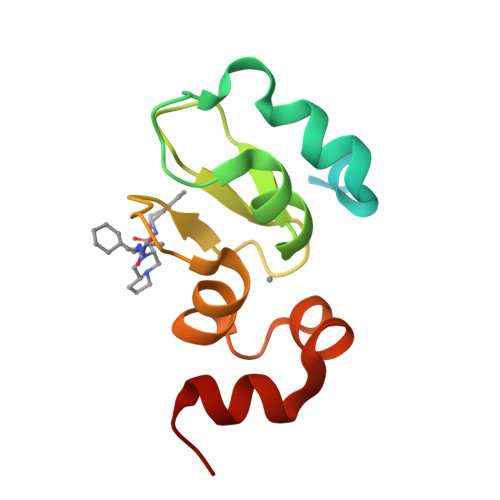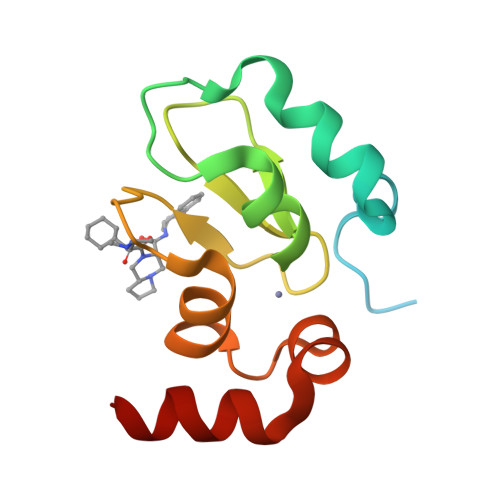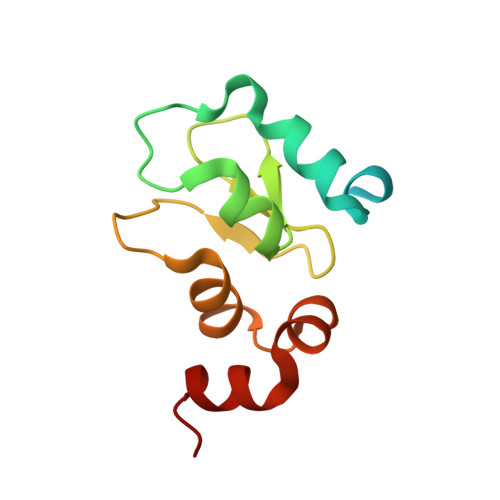Design, stereoselective synthesis, and biological evaluation of novel tri-cyclic compounds as inhibitor of apoptosis proteins (IAP) antagonists.
Asano, M., Hashimoto, K., Saito, B., Shiokawa, Z., Sumi, H., Yabuki, M., Yoshimatsu, M., Aoyama, K., Hamada, T., Morishita, N., Dougan, D.R., Mol, C.D., Yoshida, S., Ishikawa, T.(2013) Bioorg Med Chem 21: 5725-5737
- PubMed: 23928071
- DOI: https://doi.org/10.1016/j.bmc.2013.07.020
- Primary Citation of Related Structures:
4LGE, 4LGU - PubMed Abstract:
We recently reported the discovery of octahydropyrrolo[1,2-a]pyrazine A as a lead compound for an inhibitor of apoptosis proteins (IAP) antagonist. To develop IAP antagonists with favorable PK profiles, we designed novel tri-cyclic compounds, octahydro-1H-cyclopropa[4,5]pyrrolo[1,2-a]pyrazines 1 and 2 based on co-crystal structural analysis of A with cellular IAP-1 (cIAP-1). The additional cyclopropane moiety was used to block the predicted metabolic site of compound A without detriment to the binding affinity for cIAP. Compounds 1 and 2 were stereoselectively synthesized via intermediates 4a and 5b', which were obtained by Simmons-Smith cyclopropanation of ethylester 3a and silyl ether 3b'. Compounds 1 and 2 showed strong growth inhibition in MDA-MB-231 breast cancer cells and improved metabolic stability in comparison to A. Compound 2 exhibited significant in vivo PD effects to increase tumor necrosis factor-alpha mRNA in a dose dependent manner.
Organizational Affiliation:
Pharmaceutical Research Division, Takeda Pharmaceutical Company Limited, Fujisawa, Kanagawa, Japan. moriteru.asano@takeda.com





















